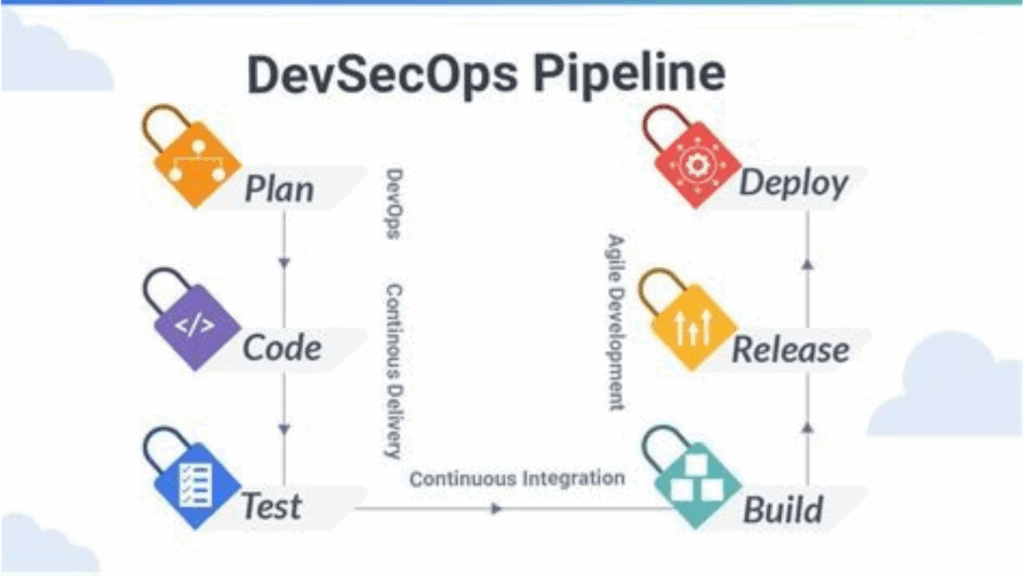Scalability testing is a non-functional testing methodology to test the software application capability to scale up or scale down based on the user requirements. It can be done at hardware level, software level or database level. The parameters used in scalability testing would differ from one application to another. Following are some of the attributes of scalability testing. They are:
- Response Time: It is the time taken by the software system to respond to user request. It is important to identify the response time for the server under the minimum load, threshold load and maximum load the point at which the application may breakdown. The response time may increase or decrease based on varying on the user load. For example the response time is measured when the user enters the web address in the URL to the time taken to load webpage content.
- Throughput: It is the measure of the number of requests processed in a unit time by the application. The throughput may differ from one application to another. In case of web application, it is the number of user requests processed per unit time. But in case of a database, it is the number of queries processed per unit time.
- CPU-Usage: It is a measure of CPU- utilisation for performing a given work by an application. For example removing the dead code in the application and minimising the use of thread. Sleep method is one of the best method to minimise the CPU utilisation.
- Memory Usage: It is the amount of memory consumed to perform a work by an application. Memory is measured in terms of bytes that the developed application uses to access the random access memory. For example if the storage space is insufficient, then the developer will add additional database storage space to avoid the loss of data. Memory usage of the application is reduced by using best programming practices.
- Network Usage: It is the amount of bandwidth consumed by an application during the test. The main goal of network usage is, to reduce the network congestion. Programming techniques like use of compression techniques can help to reduce congestion and minimise the network usage. For example instead of following the queue method to process the user requests a developer can write the code to process the user requests as and when it arrives at the database.
The steps to test the scalability for an application:
- Creating repeatable scenarios for each scalability testing attributes.
- Testing the application for various load like high, medium and low and always verify the application’s behaviour.
- Create the test environment that is stable enough to withstand the scalability testing cycle.
- Configure the hardware that is necessary to perform the testing.
- Use a set of virtual users for verifying the behaviour of an application under different load.
- Repeat the test scenarios for various application under the multiple users on different varying conditions for internal applications.
- Execute the test scenarios under the test environment.
- Analyse the report and verify the areas of improvement.
Scalability testing Vs Load testing:
Load testing measures the application under maximum load at which the system would crash. The main purpose of load testing is to identify the peak point after which the users would not be able to use the system. Scalability testing differs from load testing, it measures the system at the minimum and maximum loads of all levels including the software, hardware and database levels. The load testing determines the point where the application crashes and scalability testing identifies the reason for application crash.
Questions:
- What is scalability testing?
- What are the attributes of scalability testing?
- Explain scalability testing with an example?






























20 Responses
1. Scalability Testing:
Scalability testing is a non-functional testing methodology to test the software application capability to scale up or scale
down based on
the user requirements.
In other terms it can be explained as technique which measures the system at the minimum and maximum loads of all levels
including the software, hardware and database levels and identifies the reason for application crash.
2. Attributes of Scalability Testing:
– Response Time: It is the time taken by the software system to respond to user request.
– Throughput: It is the measure of the number of requests processed in a unit time by the application.
– CPU-Usage: It is a measure of CPU- utilization for performing a given work by an application.
– Memory Usage: It is the amount of memory consumed to perform a work by an application.
– Network Usage: It is the amount of bandwidth consumed by an application during the test.
3. Scalability Testing Example:
1. measuring the response time of the gmail login functionality after enter username and password and clicked on sign in
button based on which we can scale up or scale down the capability and identify the reasons for the delay in response.
scalability testing is a software application capability to scale up or scale down based on the user requirements. It can be done at hardware level, software level or database level. The parameters used in scalability testing would differ from one application to another. Following are some of the attributes of scalability testing. scalability testing identifies the reason for application crash.
2. The Attributes of scalability testing : Response Time, Throughput, CPU-Usage, Memory Usage, Network Usage
3. Explain scalability testing with an example : it measures the system at the minimum and maximum loads of all levels including the software, hardware and database levels
Example: Walmart site may be able to handle orders for up to 1000 users at a time but scalability testing can be performed to check if it will be able to handle higher loads during thanksgiving weekends.
Scalability testing is to test the capability of the software to scale up and scale down based on the user request, it is different
from one application to other application, it include hardware, software and database level.
Attributes:
Response time: It is to test the time taken by the software application to respond to user request.
Throughput: It is to measure the number of request processed in a unit time by application
CPU- The usage of CPU by software application to perform work.
Memory usage; The memory used by application to perform work.
Network: The network band used by application to perform task.
Ex- Time taken to login gmail account
It is a type of non-functional testing.
Testing the ability of a system, a network, or a process to continue to function well when it is changed in size or volume in order to meet a growing need.
Example : shopping site may be able to handle orders for up to 50 users at a time but scalability testing can be performed to check if it will be able to handle higher loads during peak shopping seasons.
1. Scalability testing is a type of non-functional testing which verify application capability to scale up or scale down as per requirement. It can be done at hardware, software or database level.
2. The Attributes of scalability testing : Response Time, Throughput, CPU-Usage, Memory Usage, Network Usage.
3.Example for scalability testing:Amazon site may be able to handle orders for up to 1000 users at a time but scalability testing can be performed to check if it will be able to handle higher loads during thanksgiving weekends.
What is scalability testing?
Scalability, a performance testing parameter that investigates a system’s ability
to grow by increasing the workload per user, or the number of concurrent users,
or the size of a database.
What are the attributes of scalability testing?
Scalability Testing Attributes:
Response Time
Throughput
Hits per second, Request per seconds, Transaction per seconds
Performance measurement with number of users
Performance measurement under huge load
CPU usage, Memory usage while testing in progress
Network Usage – data sent and received
Web server – Request and response per second
Explain scalability testing with an example?
Scalability testing lets you determine how your application scales with increasing
workload.
Determine the user limit for the Web application.
Determine client-side degradation and end user experience under load.
Determine server-side robustness and degradation.
example:
If scalability testing determines the maximum load to be 10,000 users,
then for the system to be scalable, developers need to take measures on factors
such as decreasing response time after 10,000 user limit is reached or
increasing the RAM size to accommodate the growing user data.
Scalability Testing is a non-functional testing that measures the performance of a system.
It is used to test the software application capability to to scale up or scale down based on the number of user requests.
The parameters used in scalability testing would differ from one application to another.
Attributes of scalability testing.
Response Time- the time between the user request and the application response.
Throughput – measure of a number of requests processed over a unit time by the application
CPU Usage – measure of the CPU Utilization for performing a task by an application.
Memory Usage – measure of the memory consumed for performing a task by an application
Network Usage – the amount of bandwidth consumed by an application during test
For example: a database application that gives good response time for 10 users should be scalable for 100 users if required.
If there is expected a load increase in the server to increase the server performance and to reduce the processing time you can shorten this time by upgrading the server hardware, for example, you can increase the CPU frequency and add more RAM.
1) Scalability, a performance testing parameter that investigates a system’s ability to grow by increasing the workload per user, or the number of concurrent users, or the size of a database.
2) Attributes in ST:
Response Time
Throughput
Hits per second, Request per seconds, Transaction per seconds
Performance measurement with number of users
Performance measurement under huge load
CPU usage, Memory usage while testing in progress
Network Usage – data sent and received
Web server – Request and response per second
3) Example: When the bandwidth speed is poor then it will take time to connect internet.
1.Scalability testing
the software application capability to scale up or scale down based on the user requirements. It can be done at hardware level, software level or database level. The parameters used in scalability testing would differ from one application to another.
2.Attributes of scalability testing
1.Response Time: It is the time taken by the software system to respond to user request.
2.Throughput: It is the measure of the number of requests processed in a unit time by the application. The throughput may differ from one application to another.
3.CPU-Usage: It is a measure of CPU- utilisation for performing a given work by an application.
4.Memory Usage: It is the amount of memory consumed to perform a work by an application. Memory is measured in terms of bytes that the developed application uses to access the random access memory.
5.Network Usage: It is the amount of bandwidth consumed by an application during the test. The main goal of network usage is, to reduce the network congestion. Programming techniques like use of compression techniques can help to reduce congestion and minimise the network usage.
3.Scalability testing with an example
The web address in the URL to take the time to load webpage content for the 100 users to 1000 usres.
Scalability testing is non-functional testing methodology to test software application capability to scale up or scale down based on user requirement.
Attributes of Scalability :
-Response time: Time taken by the software system to respond to user request.
-Throughput: measure of the number of requests processed in a unit time by the application.
-CPU-usage: It is the measure of cpu-utilisation for performing a given work by an application.
-Memory usage: It is the amount of memory consumed to perform a work by an application.
-Network usage: It is amount of band width consumed by an application during test.
1. Scalability testing is a type of non-functional testing that tests if the software application is capable of scaling up or down based on the user’s requirements. It can be done at the hardware, software, or database level.
2. The attributes of scalability include the following:
– response time – the time taken by the software system to respond to the user’s request
– CPU usage – utilization of CPU for performing the given work by an application
– Memory usage – the amount of memory consumed to perform work by an application
– Network usage – the amount of bandwidth consumed by an application during the test
3. Scalability testing measures the system at the minimum and maximum loads of all levels including the software, hardware, and database levels. An example would be to test how much slower the internet is when thousands of people are using the same network.
Scalability testing is a non-functional test methodology in which an application’s performance is measured in terms of its ability to scale up or scale down the number of user requests or other such performance measure attributes.
Scalability testing can be performed at a hardware, software or database level.
Parameters used for this testing differs from one application to the another, for example a web page, it could be the number of users, CPU usage, network usage, while for a web server it would be the number of requests processed.
Scalability testing is a non-functional testing methodology to test the software application capability to scale up or scale down based on the user requirements. It can be done at hardware level, software level or database level.
Following are some of the attributes of scalability testing. They are:
1. Response Time: It is the time taken by the software system to respond to user request..
2. Throughput: It is the measure of the number of requests processed in a unit time by the application.
3. CPU-Usage: It is a measure of CPU- utilisation for performing a given work by an application.
4. Memory Usage: It is the amount of memory consumed to perform a work by an application.
5. Network Usage: It is the amount of bandwidth consumed by an application during the test..
Scalability measures the response time of the system at minimum threshold and maximum loads,including software hardware and database.it is done to identify the reason for system crash.if the user tries to open a webpage (amazon) during festive season if the page is taking time to open,scalaility testing is done to identify why it is taking time to open the page.
1.Scalability testing is a non-functional testing methodology to test the software application capability to scale up or scale down based on the user requirements. It can be done at hardware level, software level or database level. The parameters used in scalability testing would differ from one application to another.
2.Response time,Throughput,CPU usage, Memory usage, Network usage
3.Scalability testing is a non-functional testing methodology to test the software application capability to scale up or scale down based on the user requirements.
example: consider an online shopping site with limited new offer or an airlines website & if these websites took so long time to open there pages may b because of the increased number of users all of a sudden at the same time and here we use scalability testing
Scalability testing comes under non- functional testing where it tests the software application’s capability to scale up or down based on user requirements. It can be at software, hardware or database levels and parameters used would differ from one application to other.
Attributes: Response time, Throughput, Memory Usage, CPU usage, Network Usage
Example: Banking application where if many customers log in at the same time. The database limit may be set to 20000 customers. Scalability testing determines when the application stops working/scaling and check if the limit can be increased
1.) Scalability testing is a type of non-functional testing used to test the application capability to scale up or down based on the user requirement.It can be done at hardware, software or database levels.The parameters used may differ from one application to another.
2.) Attributes of Scalability testing:
-> Response Time: The time between the user request and the application response.
-> Throughput: Measure of number of requests processed over a unit time by the application
-> CPU-Usage: Measure of CPU utilization for performing a task by the application
->Memory Usage: Measure of memory used for performing a task by an application
->Network Usage: Amount of bandwidth consumedby an application during the test
3.) Scalability Testing measures the response time of the system at minimum and maximum loads of all levels including the hardware, software and database levels. It is done to identify the reason for system crash.
Ex: If the users access the shopping websites during Black friday sales, it takes time to load the webpages. Scalability testing is done to check the performance and capability of the system.
Scalability testing is a non-functional testing methodology to test the software application capability to scale up or scale down based on the user requirements. It can be done at hardware level, software level or database level.
The attributes are –
Response Time: It is the time taken by the software system to respond to user request.
Throughput: It is the measure of the number of requests processed in a unit time by the application.
CPU-Usage: It is a measure of CPU- utilization for performing a given work by an application.
Memory Usage: It is the amount of memory consumed to perform a work by an application.
Network Usage: It is the amount of bandwidth consumed by an application during the test.
An example of Scalability testing – is when the response time is checked during normal usage and scaling the ability to handle more users with the same ideal response time.
. Scalability testing is a type of non-functional testing that can be done at hardware level, software level, or database level and tests the software application ability to scale up or scale down based on the user requirements.
2. The attributes of scalability testing:
Response Time: to test the time taken by the software to respond to a user’s request and to identify the response time for the server under the minimum and maximum threshold load at which a software application can breakdown.
Throughput: to test the measure of the number of requests processed in a unit time by a software application.
CPU-Usage: to test the measure of CPU-utilisation for performing a given task by a software application.
Memory Usage: to test the amount of memory that is measured in terms of bytes and consumed to perform a task by a software application.
Network Usage: to test the amount of bandwidth consumed by a software application and to reduce the network congestion.
3. Scalability testing tests the user accessibility response time to his or her Facebook page.
1. What is scalability testing?
Scalability testing is a non-functional testing methodology to test the software application capability to scale up or scale down
based on the user requirements. It can be done at hardware level, software level or database level.
2. Response Time- the time between the user request and the application response.
Throughput – measure of several requests processed over a unit time by the application
U Usage – measure of the CPU Utilization for performing a task by an application.
3. Explain scalability testing with an example
Apple may be able to handle orders for up to 1000 users at a time but scalability testing can be performed to check if it will be able to handle higher loads during Holidays time.(Thanksgiving weekends)
non-functional testing methodology to test the software application capability to scale up or scale down based on the user requirements
Attributes:
Response Time: It is the time taken by the software system to respond to user request.
Throughput: It is the measure of the number of requests processed in a unit time by the application.
CPU-Usage: It is a measure of CPU- utilization for performing a given work by an application. Memory Usage, Network Usage CPU usage.